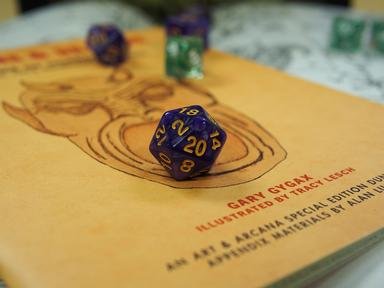Quiz Answer Key and Fun Facts
1. Each D&D character you create has ability scores that define attributes of your character. Which one of the following is NOT a standard ability score?
2. Which of the following is present as a character class (not a kit) in each of the first four editions of D&D?
3. Which of these following game mechanics are present in all of the first four D&D editions?
4. Alignment is the D&D game mechanic that defines a character's outlook and philosophy. While the first 3 editions of D&D used the same nine alignments, the 4th edition eliminated around half of them. Which of the following alignments was eliminated in the 4th edition?
5. What would Dungeons and Dragons be without monsters? Which of the following monster types is the only one of the four to appear as written below in the first four editions?
6. Part of the fun of D&D involves getting lots of treasure, preferably magical. Which of the following non-artifact magic items is available in each of the first four editions, with the same functionality?
7. Which of the following D&D spells exists (under this name) in all of the first four editions?
8. Although the Dungeon Master can create his or her own adventures, pre-made adventures can be bought. What are these known as?
9. The dragon is one of the most fearsome monsters in D&D. Which dragon type is NOT present in all of the first four editions?
10. Under which of the following circumstances would the message "You just gained six hit points!" be most appropriate?
Source: Author
eyhung
This quiz was reviewed by FunTrivia editor
WesleyCrusher before going online.
Any errors found in FunTrivia content are routinely corrected through our feedback system.

